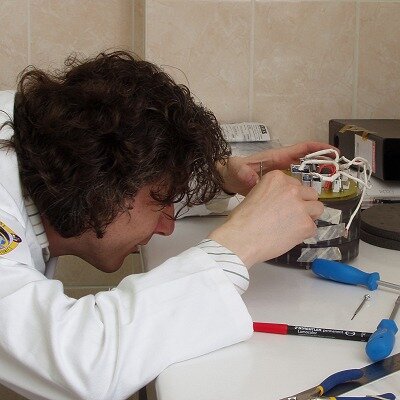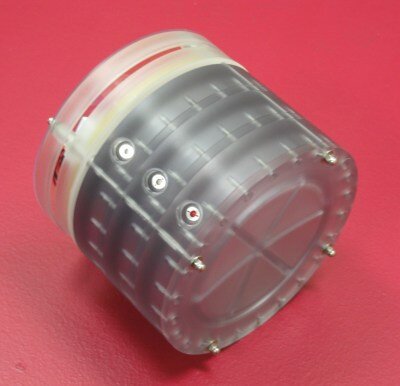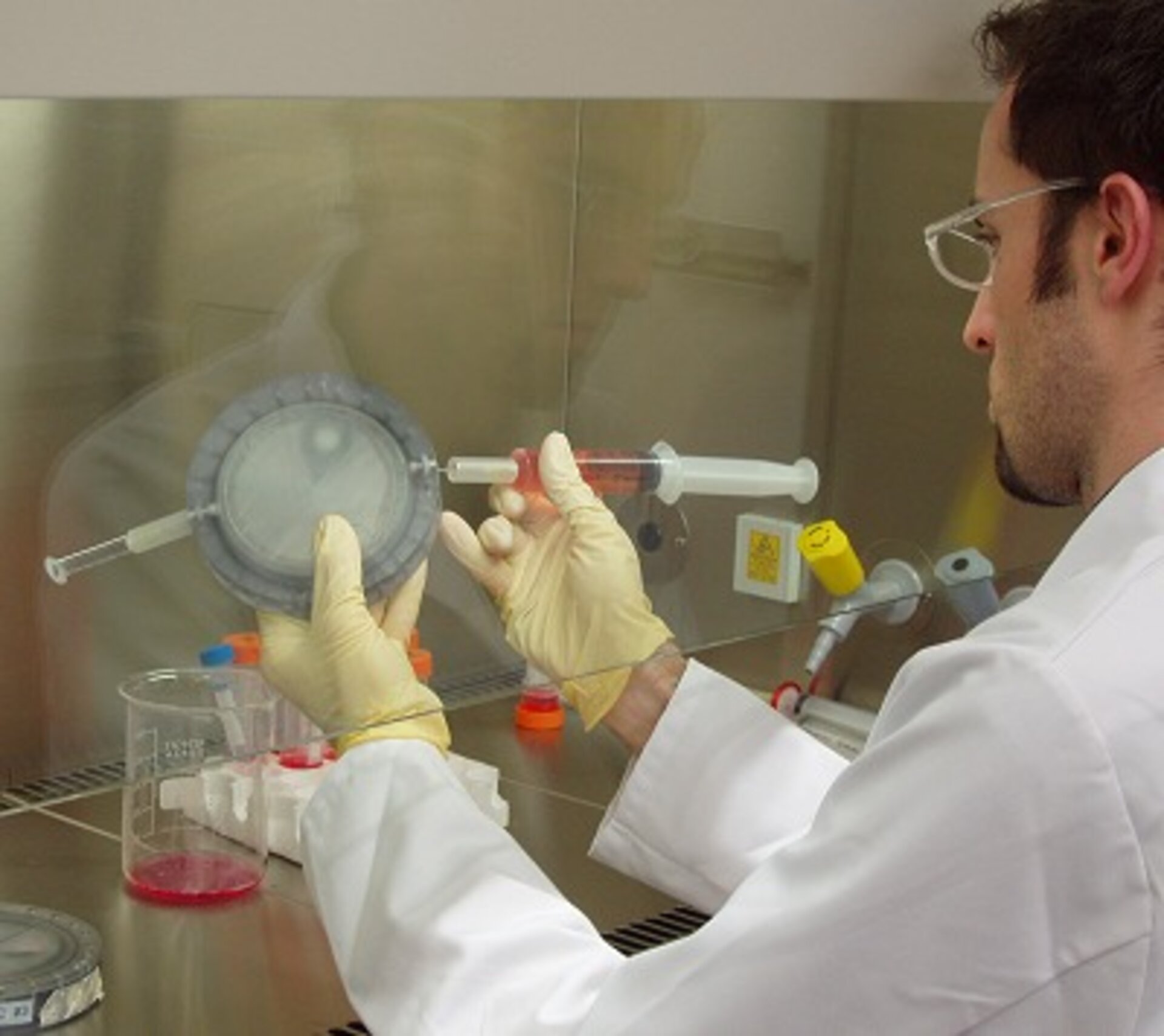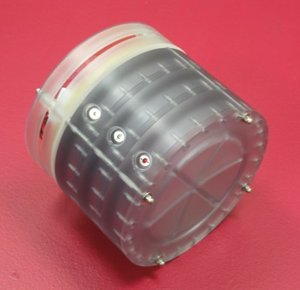BOP experiment comes to successful end
Adalberto Costessi is the Principal Investigator (PI) for the Bone Proteomics experiment (BOP) that Roberto Vittori conducted on board the International Space Station (ISS) yesterday. Costessi, the winner of the Success 2002 student contest, turns 26 on 23 April, seven days into the Eneide Mission.
Success 2002, a competition for European university students, was organised by the ISS Utilisation Strategy and Education Office within ESA's Directorate of Human Spaceflight, Microgravity and Exploration. Students, from fields such as life sciences, physical sciences, space sciences, technology and earth observation, were asked to propose an experiment to fly on board the ISS.
“As my prize for winning the contest I have been at ESTEC, ESA’s research and technology centre in the Netherlands, since June 2004. It has been an amazing experience with lots of very hard work,” tells Costessi, who has a degree in Biotechnology from the University of Trieste, Italy. “We built the experiment in just a few months. It’s a complex experiment, so it was a real challenge, requiring Roberto Vittori’s active participation.”
BOP will study the functionality of bone-producing osteoblast cells under weightlessness conditions.
It is well documented that a long stay in space has certain negative side effects on the human body. Specifically, it was noticed that astronauts show a loss in bone mass of around 1% for each month they spend in space.

“In the past, experiments have shown the number of osteoblast cells that reach full maturation is decreased under weightlessness conditions compared to Earth. On top of that the mature cells also produce far less bone material,” says Costessi. “But we do not yet know why.”
What is interesting and in some way surprising is that microgravity affects both complex systems, such as a human being, as well as single cells. This allows us to study culture cells in space.
On 17 April 2005, a few hours after arriving at the Space Station, Roberto Vittori changed the liquid inside the experiment hardware, providing the cells with new nutrients. Two days later, on 19 April, the osteoblast cells were stimulated and the experiment closed.
“On Earth, osteoblast cells can be stimulated by molecules of ATP that are produced by the cells themselves in response to mechanical stimulations,” explains Costessi. “In the BOP experiment Vittori stimulated the osteoblast cells in the culture chambers by injecting a solution of ATP with syringes. It is the first time that such an experiment takes place in a microgravity environment.”
“The proteomics method is also innovative;” he adds, “Proteomics has not been applied in a microgravity experiment before. It is a very powerful method which allows biologists to study hundreds of proteins simultaneously with a single analysis.”

Proteomics is the analysis of the protein content of a cell. The BOP culture chambers will be returned to Earth at the end of the Eneide Mission. Once back in the laboratory, they will undergo a process to dissolve the cell membrane. In this way, a protein solution is obtained from the osteoblast cells.
The protein solution is analysed in a bi-dimensional gel measuring 5 cm x 10 cm x 0.5 cm. The proteins, which are electrically charged, will spread along one dimension according to their charge (isoelectric point, that is the pH value corresponding to a null charged protein). Afterwards, an electrophoresis method is applied: proteins are separated along a second dimension, perpendicular to the previous one, according to their molecular weight.
Finally, the gel is coloured. The result is a bi-dimensional distribution of dark ‘spots’ on a white background: every spot corresponds to a protein species. A sort of ‘biological diagram’ is drawn up, allowing us to see the protein contents of osteoblast cells. The most interesting spots are analysed by a mass spectrometer to identify the proteins precisely.
The same diagram is built up with the contents of osteoblast cells that have not been stimulated by ATP, in order to identify levels of protein production or degradation.
“We strongly hope BOP allows us to understand better how osteoblast cells work,” concludes Costessi. “We hope to help discover new methods for treating bone diseases. Not only for the astronauts, but also for the millions of people affected by osteoporosis here on Earth.”







